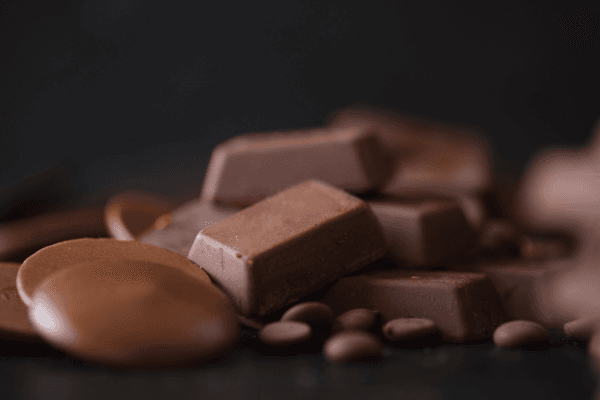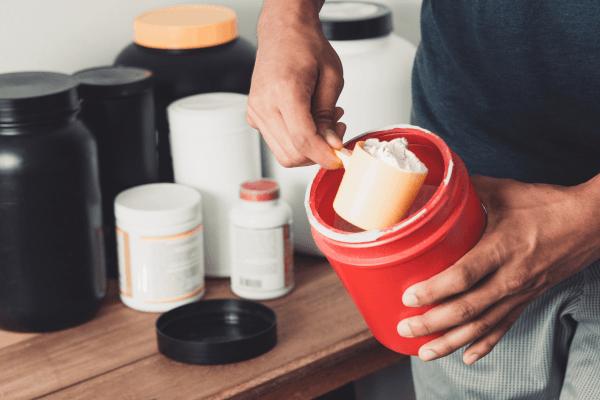Who doesn’t love chocolate? It can be a guilty pleasure for many.
The way it melts in your mouth, waves of sweetness and happiness through every bite. Whether you are a fan of smooth dark chocolate, bold dark or creamy white, each type brings magic. It has captured taste buds and hearts worldwide. Chocolate is more than just a treat. It’s a journey of flavours, traditions, and happiness.
In this blog let us explore the journey of chocolate and find the best chocolate.
History of chocolate
Chocolate is made from the cocoa beans. These cocoa beans are native to Central and South America. They were also used in exchange for currency. The invention of cocoa beans is unclear, according to Hayes Lavis the Olmecs used cacao to make a ceremonial drink around 1500 B.C. Initially, the chocolate was prepared as drinks using hot water, often flavoured with cinnamon and pepper.
The first chocolate bars were invented by British chocolatier J.S. Fry and Sons in 1847. It was made of sugar, chocolate liquor and cocoa butter. Later in 1876, the Nestle company introduced milk chocolate to the market.
The companies Cadbury, Mars, and Hershey started mass-producing a variety of chocolate in the late 19th and early 20th Century.
Varieties of Chocolates
- Dark chocolate – The chocolate liquor is refined further to produce cocoa solids. These cocoa solids are what we eat as chocolate. It contains 50-90% cocoa solids, cocoa butter and sugar.
- Milk chocolate – Milk chocolate contains 10-50% of cocoa solids, cocoa butter, milk (in some form) and sugar.
- White chocolate – The white chocolate is mainly made with cocoa butter, sugar, milk powder and flavouring. Since the main ingredient is cocoa butter, white chocolate can contain trace amounts of caffeine and theobromine.
Byproducts of cocoa beans
- Cocoa nibs
- Cocoa liquor
- Cocoa cake
- Cocoa butter
- Cocoa powder
- Chocolate
Processing of chocolate
- Harvesting – The best cocoa beans are grown in tropical rainforests. Forastero, Criollo and Trinitario are the three main types of cocoa beans. Forastero, among the three, has the strongest flavour. The pods, which are rich-golden-orange or red colour, are harvested. The beans covered in pulp are removed from the fruit.
- Fermentation and drying – Right after harvesting, cocoa beans are fermented to fully develop the flavour. In the fermentation, the pulp is liquified. Fermentation occurs naturally with the presence of yeast but some companies add yeast-based starter cultures. It is usually done in large wooden boxes and covered with leaves. The process takes 5-7 days, the beans are turned for aeration. The fermented beans are dried in the sun to prevent mould growth.
- Roasting – The sun-dried cocoa beans are roasted between 105°C and 150°C for 20-30 minutes. It is roasted to a dark brown colour. Roasting the beans develops flavour and aroma, it also eases the process of removing the shells.
- Grinding/milling and refining – The roasted beans are run through a winnowing machine, this cracks the husk and blows away with the fan. The leftover pieces are called the nibs. These nibs contain 53% cocoa butter. The nibs are grounded. The grinding of the nibs produces chocolate liquor, and some nibs are suspended in oil. The cocoa butter is removed by pressing the chocolate liquor. The dry-pressed cake is again ground into cocoa powder. With chocolate liquor, other ingredients like cocoa butter, sugar, vanilla and emulsifying agents can be added. The chocolate liquor is processed further to produce byproducts. When milk is added to the mixture, the resulting chocolate is milk chocolate. White chocolate is produced when only cocoa butter is added.
- Alkalisation – The chocolate nibs and/or chocolate liquor is treated with a mild alkali solution to increase the pH, this process is called alkalisation. This process helps in reducing the bitterness, increases the solubility and also creates a dark brown or red-brown colour. The disadvantage of this process method is that the flavanol content can be reduced, and as a result, the health benefits may also be reduced.
- Conching – In the conching process, the cocoa butter is scraped and evenly distributed within the chocolate. With the frictional heat, release of acids, volatiles and oxidation the flavour is developed. This process helps to smooth out the harshly acidic flavour and develop a uniform flavour and smooth texture. This process can take from 4 hours to 3 days.
- Tempering – The important step in dark chocolate processing is tempering. It controls the crystallisation of the cocoa butter. The cocoa butter fat is crystallised into six different forms, which have different melting temperatures. Uncontrolled crystallisation can lead to a white coating called fat bloom and also the final texture will crumble instead of snapping when broken.
- Final products – The tempered dark chocolate is ready to be moulded into the final product.
What makes people crave chocolate?
Most of the chocolates are added to sugar. The main addictive ingredient is sugar, which can make chocolate addictive. Another factor that makes you crave or like chocolate is the cocoa butter. Cocoa butter has a unique structure, it melts at body temperature. This gives a good mouthfeel.
Nutritional value of chocolates
Nutritional value per 100 g
Chemical composition | Dark Chocolate | Milk chocolate |
Energy | 515 | 545 |
Protein (g) | 6.6 | 7.3 |
Lipid (g) | 33.6 | 36.3 |
Carbohydrate (g) | 49.7 | 50.5 |
Sugar (g) | 49.7 | 50.5 |
Total fibre (g) | 8 | 3.2 |
Sodium (mg) | 11 | 120 |
Potassium (mg) | 300 | 420 |
Iron (mg) | 5 | 3 |
Calcium | 51 | 262 |
Theobromine (mg) | 802 | 125 |
Phenolics (mg) | 579 | 160 |
Flavonoids (mg) | 28 | 13 |
The fibre in chocolate
The fibre content varies among chocolates. The way the chocolates are crafted makes a difference in fibre content.
Dark chocolate has around 4-7 g of fibre. If the manufacturing companies use cocoa pulp sugar, it increases the content of fibre. The husk of the cocoa seeds is very high in fibre.
Polyphenols
The cocoa is rich in polyphenols. The quantity of polyphenols can be affected by the processing of cocoa beans. Three groups of polyphenols are present in cocoa beans, including catechins (37%), anthocyanidins (4%) and proanthocyanidins (58%). The polyphenols cause the bitterness in the unprocessed cocoa beans.
Cocoa beans contain nitrogenous compounds like protein and methylxanthines (theobromine and caffeine).
Theobromine
It is a methylxanthine alkaloid and is found in cocoa beans and chocolate. Theobromine belongs to the polyphenol compounds. It is relative to caffeine and has some physiological effects. It contributes to the bitter taste of cocoa beans and chocolate. Like caffeine, theobromine is also a stimulant, but it is milder and slower to develop. 50g of chocolate contains 19 mg of caffeine and 250 mg of theobromine.
Theobromine concentration in cocoa beans varies depending on several factors like plant variety, growing conditions, and processing methods. Cocoa beans contain around 1-2% theobromine by weight. A higher concentration is found in dark chocolate compared to milk chocolate due to the high concentration in cocoa beans.
Theobromine primarily acts by blocking adenosine receptors and inhibiting phosphodiesterases, but it also has significant effects that are not dependent on adenosine receptors, such as lowering oxidative stress in cells and controlling gene expression. Theobromine is a chemical that has the potential to be a safe and natural substitute for certain human disorders.
Benefits of theobromine
- Cardiovascular health – Theobromine acts as vasodilator. This leads to a reduction in blood pressure, it can benefit people with hypertension. Some research suggests that theobromine helps improve the lipid profile by increasing the HDL cholesterol and reducing the LDL cholesterol. Monounsaturated fat oleic acid present in cocoa butter improves cardiovascular health and metabolism.
- Cognitive function – Theobromine has mild psychoactive effects, it improves mood and reduces the symptoms of depression. It also enhances cognitive function by improving the reaction time and working memory.
- Respiratory health – It acts as a smooth muscle relaxant. The bronchial muscles are relaxed which aids in the management of respiratory conditions like asthma or chronic obstructive pulmonary disease.
- Antioxidant properties – Theobromine exhibits antioxidant activity, it neutralises harmful free radicals in the body.
- Anti-inflammatory effects – It has mild anti-inflammatory properties and is beneficial in managing various inflammatory conditions.
- Weight management – Some studies suggest that theobromine suppresses appetite.
- Diuretic effects – The diuretic properties of theobromine promote urine production.
- Neuro-protective effects – Some studies show that theobromine has neuro-protective properties and this can reduce the risk of neurodegenerative diseases.
Dark chocolate and weight loss
There are some studies that suggest consumption of dark chocolate contributes to weight gain. It is the cocoa that is present in chocolate that has effects on weight loss. The ghrelin hormone levels are reduced and you may feel less hungry due to the cocoa and its high fibre content. The combination of fibre, fat and intense flavour of dark chocolate slows down the digestion and increases the feeling of fullness.
Flavonoids present in chocolate have some effects on metabolism and fat oxidation. It also has a positive effect on gut bacteria which indirectly influences weight loss. Flavanols may act as prebiotics and promote the growth of beneficial gut bacteria.
Flavanols improve insulin sensitivity in pre-diabetes. Polyphenols have antioxidant properties which protects the cells from damage caused by the free radicals. Chronic stress and elevated levels of cortisol are associated with weight gain, dark chocolate consumption has been linked to lower levels of stress hormone. Theobromine increases fat oxidation.
Dark chocolate are beneficial for health but it should not be considered as a weight loss solution on it’s own.
To answer the question, ‘What is the best chocolate’?
The processing of the chocolate is very important. To get the maximum benefits of chocolate it is good to go with minimally processed dark chocolate. Many big chocolate manufacturing companies ultra-process the chocolate by adding sugar and other ingredients to stabilise it.
White chocolates are not made with cocoa liquor or cocoa beans. They are high in cocoa butter and milk powder; they don’t have any benefits that dark chocolate has. Dark chocolate claims to be 70% dark. It means it is 70% chocolate and 30% sugar or other ingredients. As a rule of thumb, chocolates which have above 75% solids are considered healthy.
For good quality chocolate, it depends on the growth quality of the beans, cocoa percentage and absence of artificial ingredients. The polyphenol concentration depends on the bean quality and processing. Good quality chocolates are expensive.
Look out for the following
- Check the ingredients – Good quality chocolates have fewer ingredients. Look out if the first ingredients like cocoa mass, and cocoa butter are present. Avoid vegetable oil, palm oil, artificial flavours or excessive added sugar.
- Cocoa percentage – For good quality dark chocolate aim for 70% cocoa. Higher cocoa content has more benefits and less sugar.
- Smell and snap test – The chocolate should have a rich aroma and give a satisfying snap when broken.
- Melting experience – Good quality chocolate has a smooth, creamy and rich texture when it melts.
Kripa N,
Senior Clinical Dietitian, Simplyweight





